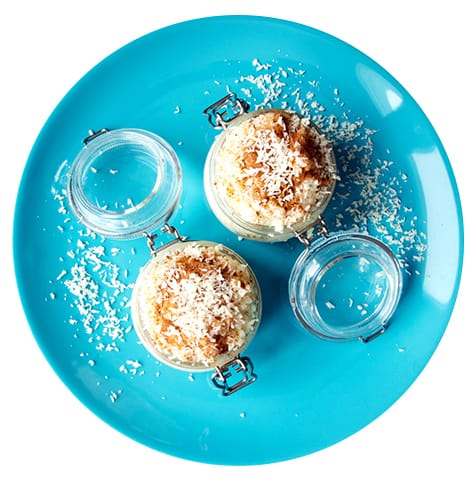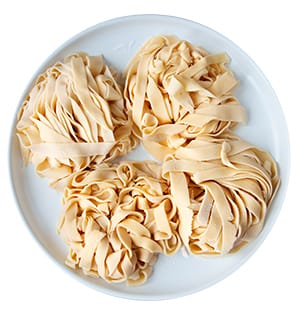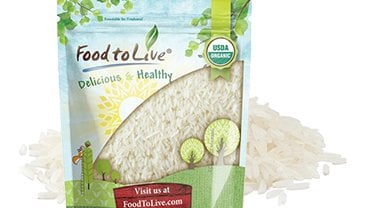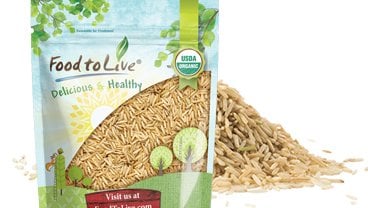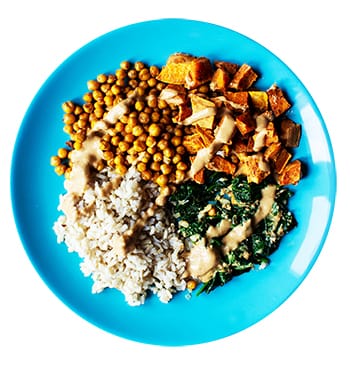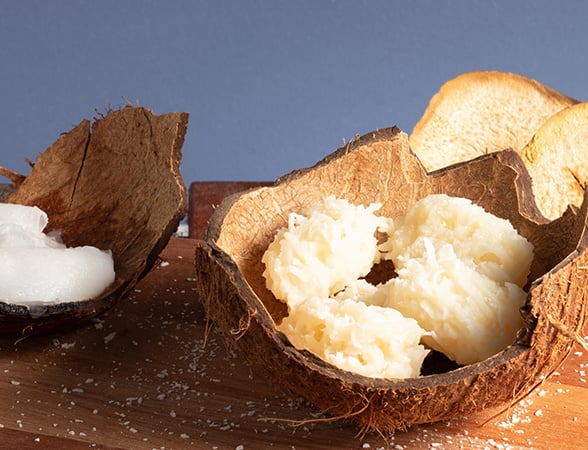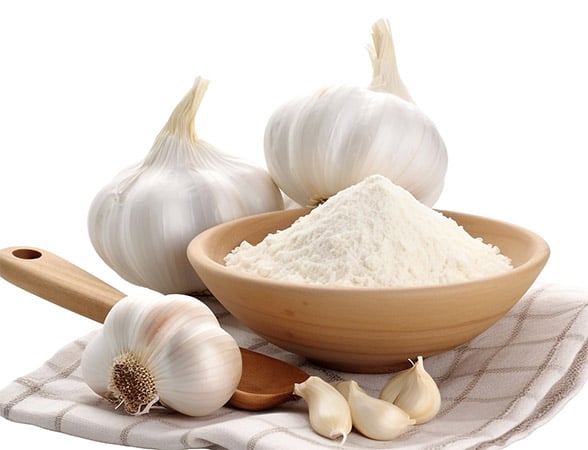June 18, 2022 · Written by Foodtolive Team
A Guide to Rice Varieties and Best Ways to Use Them
This product comes from Asia and has become one of the most important food crops in the world. It is also universal and can be served as a main dish or as a side to meat, fish, and vegetables.
Yes, we’re talking about rice!
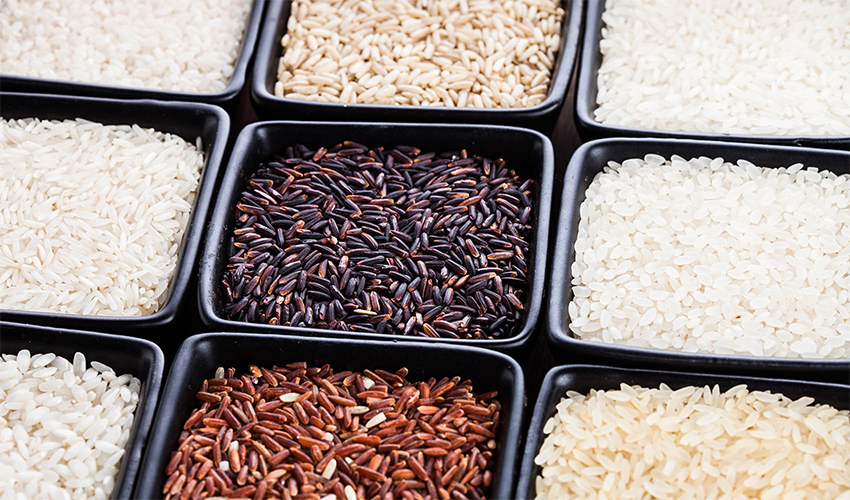
Rice is…
a grain related to other cereal grass-plants such as wheat, oats, and barley. Rice is easy to cultivate, but at the same time, it needs moisture and can grow directly in water. Because rice quickly weakens in case of drought, needing moisture is both its strong and weak characteristic.
How is rice produced?
Rice is a semi-aquatic plant that requires consistent, all-season irrigation to grow, thus it is cultivated differently than other grains. Heavy clay and silt loam soils that are often ill-suited to other crops because they retain water very well, are perfect for rice. [1]
Before planting, farmers prepare the land using precision GPS and laser-guided earthmoving equipment to create uniform grades and slopes within fields, which decrease water use and increase productivity. [1]
Flooding is imminent: it helps rice survive in the field with weeds where it gets nutrients and sunlight. Rice seed is then soaked and loaded into planes. Then rice begins its five-month period of maturity. The maximum height of rice plant is 3 feet after its rapid growth. Water depth should be no less than 5 inches. Fields must be drained before producers begin rice harvesting. As soon as the fields are dry, state-of-the-art harvesters enter the fields to collect perfectly ripe grains. Then the rice is dried out until the moisture level is perfect. Producers store their rice at the mill where the hull is removed leaving the rice brown. White rice is the result of gently removing bran layers to leave just the inner, pearly grain. [2]
Stages of rice production or rice lifecycle

Rice starch or what determines rice texture
Rice starch is a natural polymer carbohydrate and is one of the main rice components. Amylose and amylopectin are two types of starch. Rice texture depends exclusively on the amount of starch present in a certain rice variety. Once rice is cooked, both heat and liquid penetrate the grain and the starch molecules break down inside the grain. Amylose is a long, straight starch molecule that does not gelatinize during cooking. Whereas Amylopectin is a highly branched starch molecule that is responsible for making rice gelatinous and sticky. Grains with high amounts of amylose are separated once cooked while grains with amylopectin will be very sticky after cooking. Long grain rice such as Basmati and Jasmine normally contain high amounts of amylose, while short-grain rice typically contains lower levels of amylose and the highest level of amylopectin. [3]
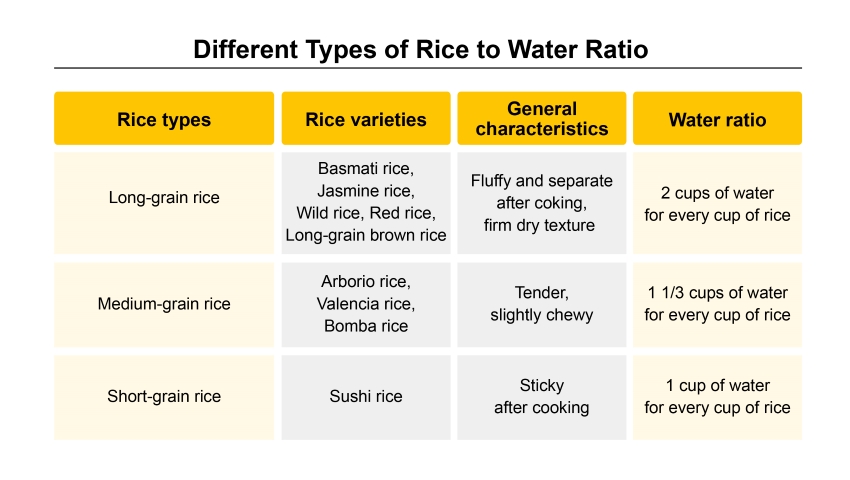
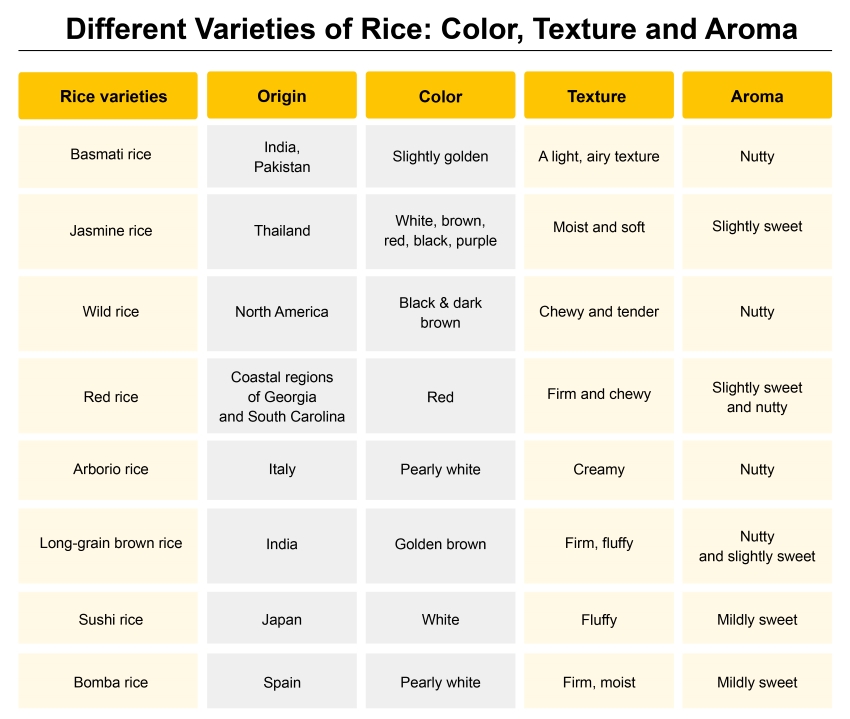
Easy Meal Ideas or What Type of Rice do I actually Need
(This product does not cure or prevent any diseases)
In culinary, different rice varieties are used to make endless delicious meals. What type of rice you need depends on the dish you’re going to make!
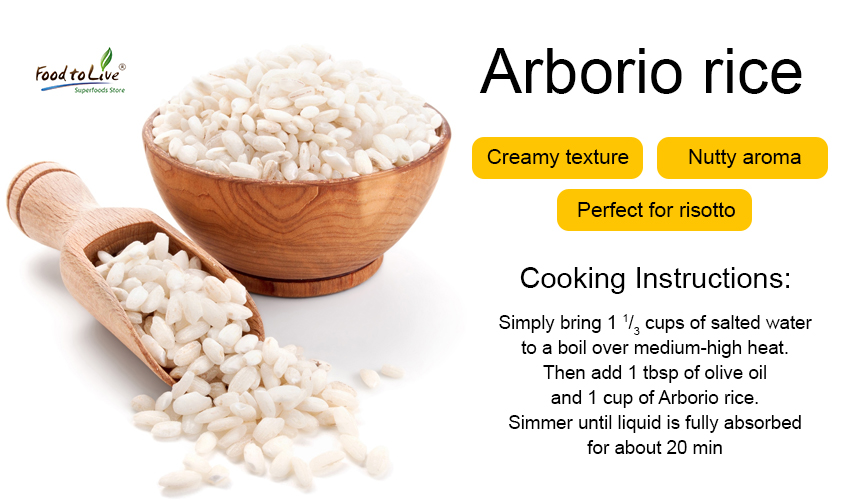
Arborio rice comes from Italian cuisine and is perfect for risotto. Its peculiarity is that it becomes creamy after cooking yet rice grains do not stick together. Rice can absorb all flavors: spices, fish, and vegetables. You can cook Arborio rice in a pot or saucepan; simply bring 2 cups of salted water to a boil over medium-high heat. Then add 1 tablespoon of olive oil and 1 cup of Arborio rice. Simmer until liquid is fully absorbed for about 20 minutes. [4]

Jasmine rice is a long-grain white rice with a very delicate taste, reminiscent of hot milk. This is a great option for cooking spicy oriental cuisine. It works best with seafood, vegetables, and pilaf.
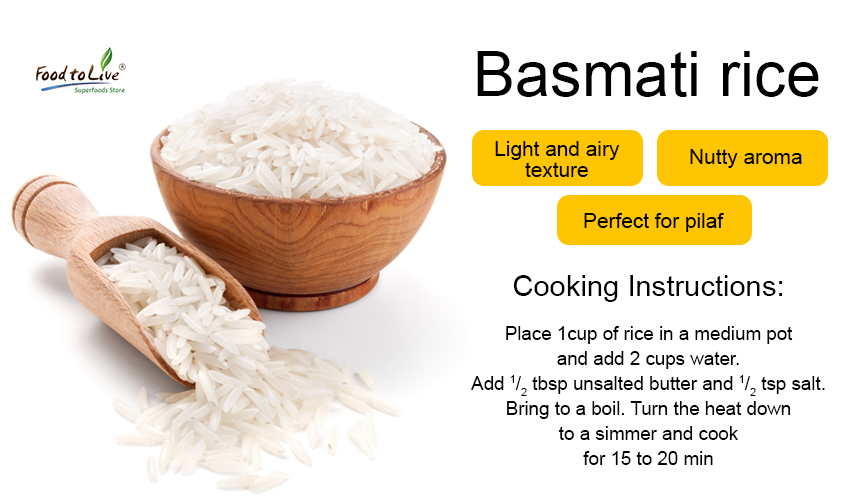
Basmati rice is also called the “king of rice”. Basmati Rice grains are longer and thinner than other varieties, making it suitable for cooking Indian and Iranian pilaf as well as side dishes. It is rich in phosphorus and potassium which help to regulate bone tissue and repair and normalize the cardiovascular system.
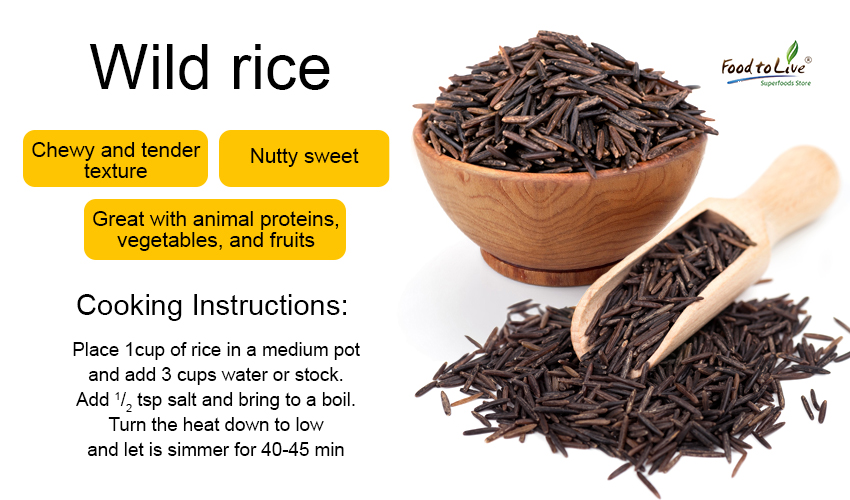
Wild rice – an exotic cereal! Due to its unusual taste and many useful properties, wild rice takes grand popularity among chefs and nutritionists around the world. Its uniqueness lies in the biological and chemical composition of the grain. The product contains 15% pure protein, 70% carbohydrates, and a minimum amount of fat. On top of that, wild rice contains almost no gluten, but a lot of vitamins and trace elements. Its regular consumption helps reduce edema, normalize blood pressure, and cholesterol metabolism. In addition, wild rice improves vision, relieves eye fatigue, improves nervous and cardiovascular systems, normalizes metabolism, and improves muscle performance. It works best with animal proteins, vegetables, and fruits.
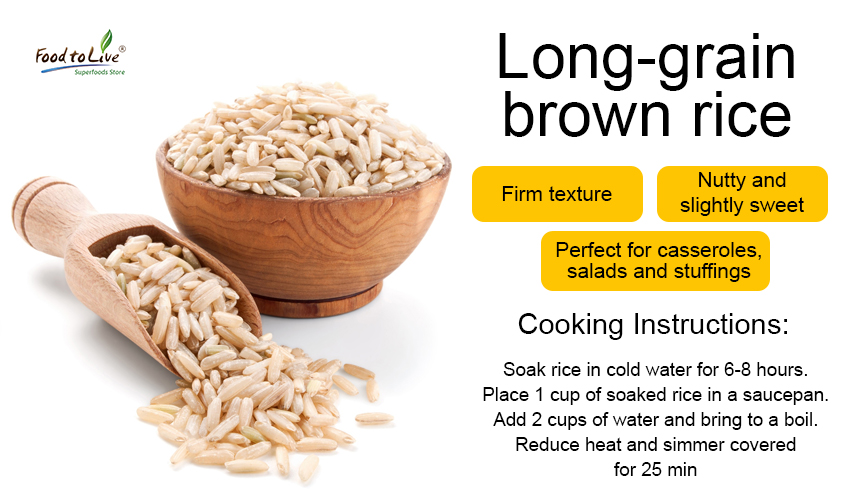
Long-grain brown rice is also gluten-free, therefore, there is no risk of allergic reactions. Brown rice, like any other grain, must be soaked; this reduces the level of allergens and increases the absorption of nutrients. There are several methods of preparing it (note, it takes longer to cook than the regular white rice). We recommend soaking it in cold water for 6-8 hours before cooking so that it is soft once cooked. Brown rice contains essential trace elements for the normal functioning of the body: manganese (participates in bone formation, wound healing, muscle contraction and metabolism, regulates blood sugar); selenium – (important for heart and thyroid health); magnesium (helps maintain heart rhythm); protein, etc.
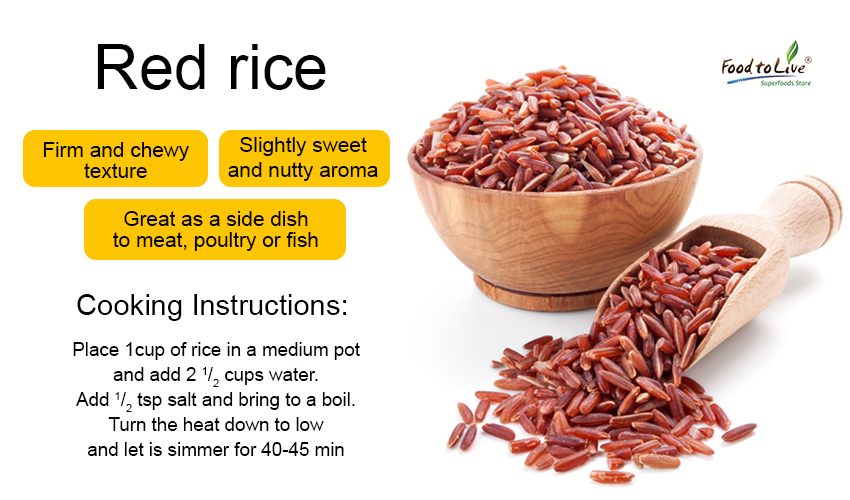
Red rice – unpolished rice that contains a significant amount of fiber, but also minerals, vitamins, and amino acids. That’s why the grains don’t change their shape and acquire a pleasant nutty aroma in the process of cooking. The rice shell is rich in potassium, it helps to remove salts from the joints, and eliminate the inflammatory process. This product contains amino acids that are usually found only in meat. This means vegans can have another great nutritious alternative. It can be served with vegetables, mushrooms, as a side dish to meat, poultry or fish, or it can be also combined with milk and dried fruit.
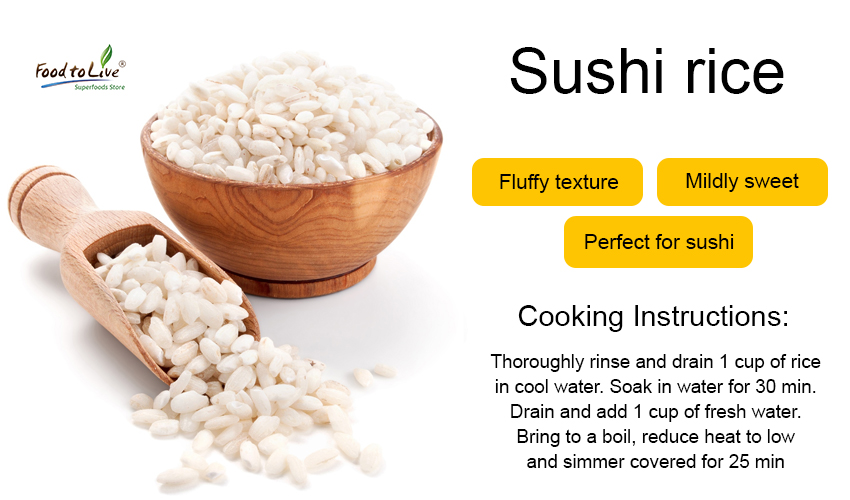
Sushi rice – a short-grain white rice that normally comes in two types:
- Koshihikari (a cultivar of Japonica) with sweetish, nutty flavor. It’s widely grown in Japan as well as in the US, Italy, and Australia.
- Hitomebore and akitakomachi are newer cultivars bred from koshihikari.
Sushi rice is traditionally seasoned with rice vinegar, sugar, and salt. These ingredients are heated together (but not boiled) until sugar and salt have dissolved. It is also recommended to presoak sushi rice before cooking it. [5]
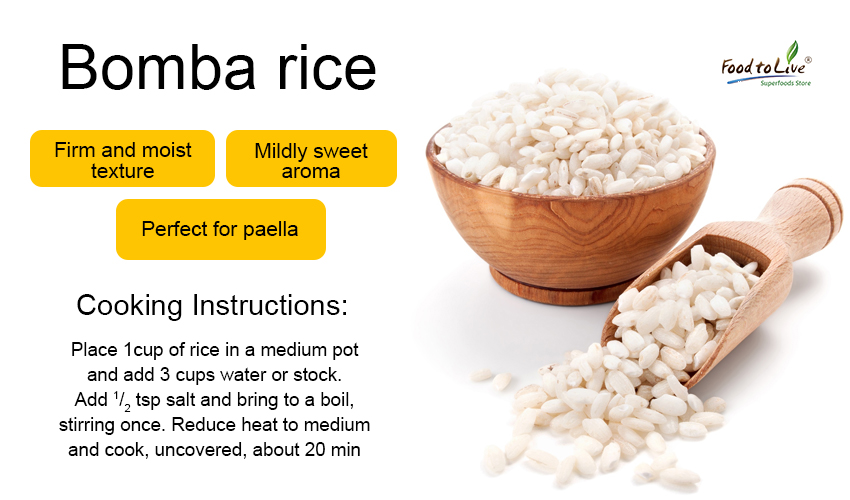
Bomba rice is a perfect and indispensable rice type for paella (Spanish national dish coming from the region of Valencia). It was named “bomba” due to its unique quality of water absorption, which is about two to three times more of its weight. Besides, it has a good content of amylose; that’s why it acquired non-stick properties.
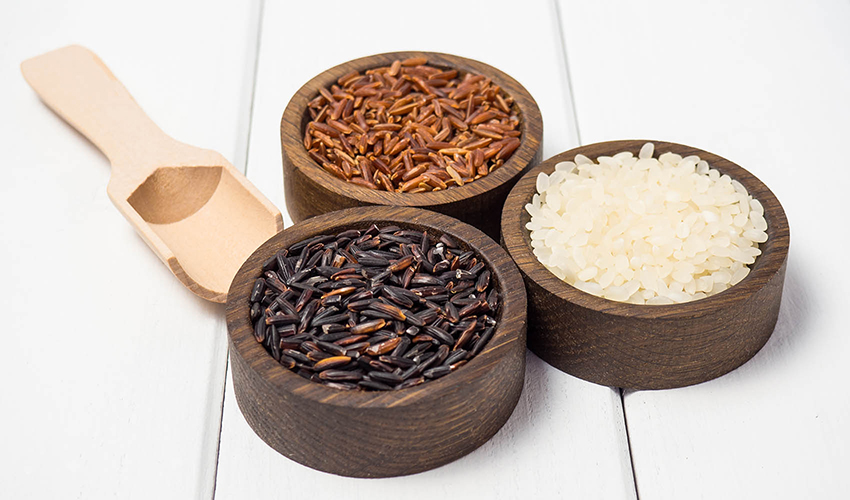
Does rinsing rice before cooking really matter?
Snow-white grain seems clean. In fact, there is starch on the surface layer of the grains that makes them white. The rice groats we see on the market may be contaminated due to production, transportation, and storage. If you pour grains into a bowl with water, the liquid will become cloudy. That is dust. Therefore, rice must be washed before cooking. There is one exception though – Arborio rice. It is treasured for its high starch content that is needed for risotto (the starches slough off the exterior and add thick creaminess to the dishes). If you are going to make risotto, don’t soak the rice!
Stovetop vs Rice Cooker: Ways to Cook Rice
The key difference lies in rice texture. You can’t go wrong with rice if you choose a rice cooker. The rice cooker has the latest technology, which uses thermal sensors. These sensors maintain the internal temperature of the cooker, helping you cook excellent quality rice.
spite the hype of rice cookers, some chefs don’t consider it as a great investment. [6] If you are cooking in a pot, then you must determine whether rice absorbed enough water on your own. A rice cooker has a thermometer; therefore, it can determine when the rice has absorbed all the liquid by the simple principle that water boils at 212 degrees F.
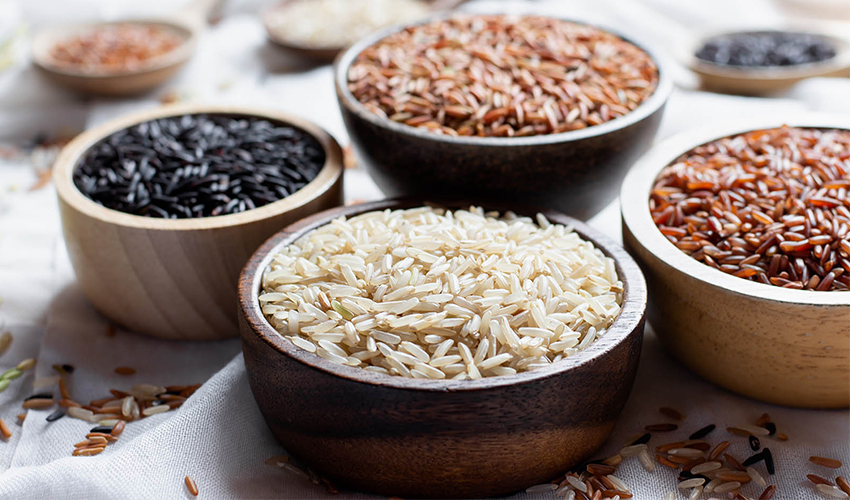
The secret: What exactly makes rice universal
What makes rice so unique is its popularity all over the world – in fact, it’s a universal food that supplies two-thirds of the world and can be used both as a main and side dish. You can find different rice varieties on a market today to “implement” creative culinary ideas of the world’s national cuisines: risotto, paella, Mansaf, Jambalaya, Jollof rice, Nasi goreng and many more. Not only is rice remarkable for its taste, but also for its valuable content: vitamins of group B, amino acids, potassium, phosphorus, etc. Unlike other grains, it is gluten-free, therefore, is a wonderful choice for gluten-intolerant people. You may still wonder: are there any side effects? Well, rice is safe to consume. However, there is one factor to consider: overconsumption can boost high risk for developing obesity. So, make sure you maintain a well-balanced diet.
References
- https://www.usarice.com/thinkrice/discover-us-rice/how-rice-grows
- https://calrice.org/industry/how-rice-grows/
- https://rouxbe.com/tips-techniques/374-what-makes-rice-sticky
- https://www.masterclass.com/articles/what-is-arborio-rice-basic-arborio-rice-risotto-recipe
- https://www.bbcgoodfood.com/recipes/sushi-rice
- https://missvickie.com/rice-cooker-vs-pot/

